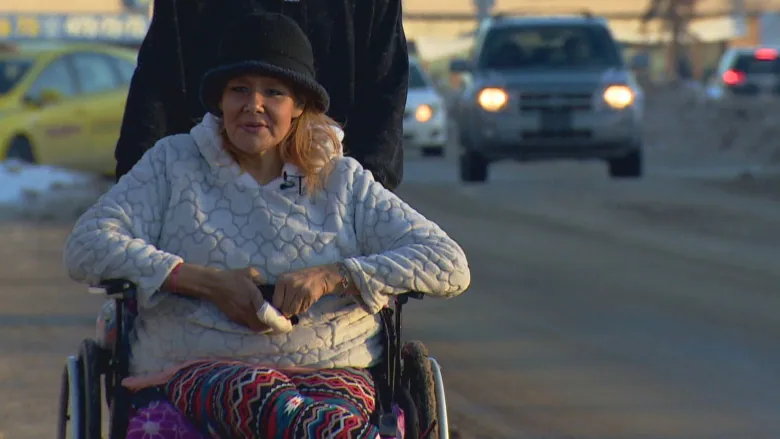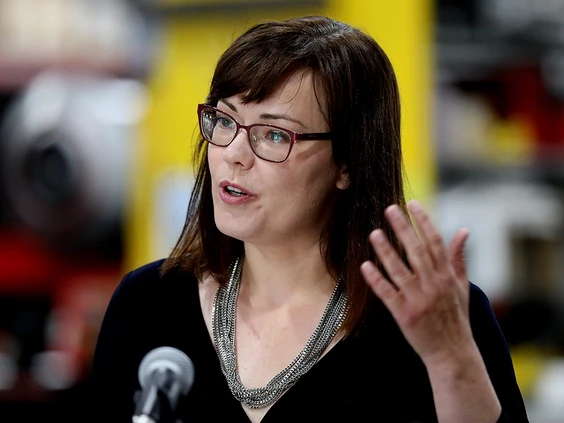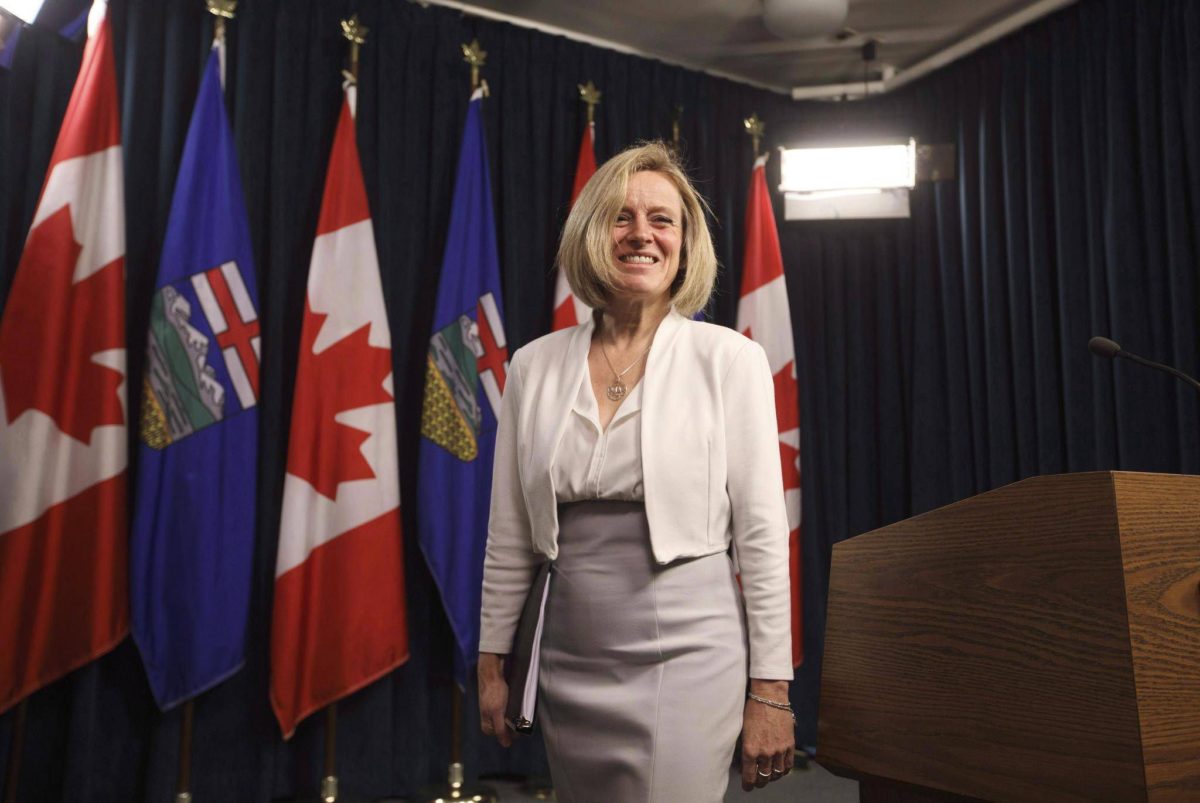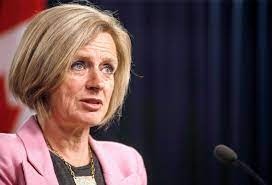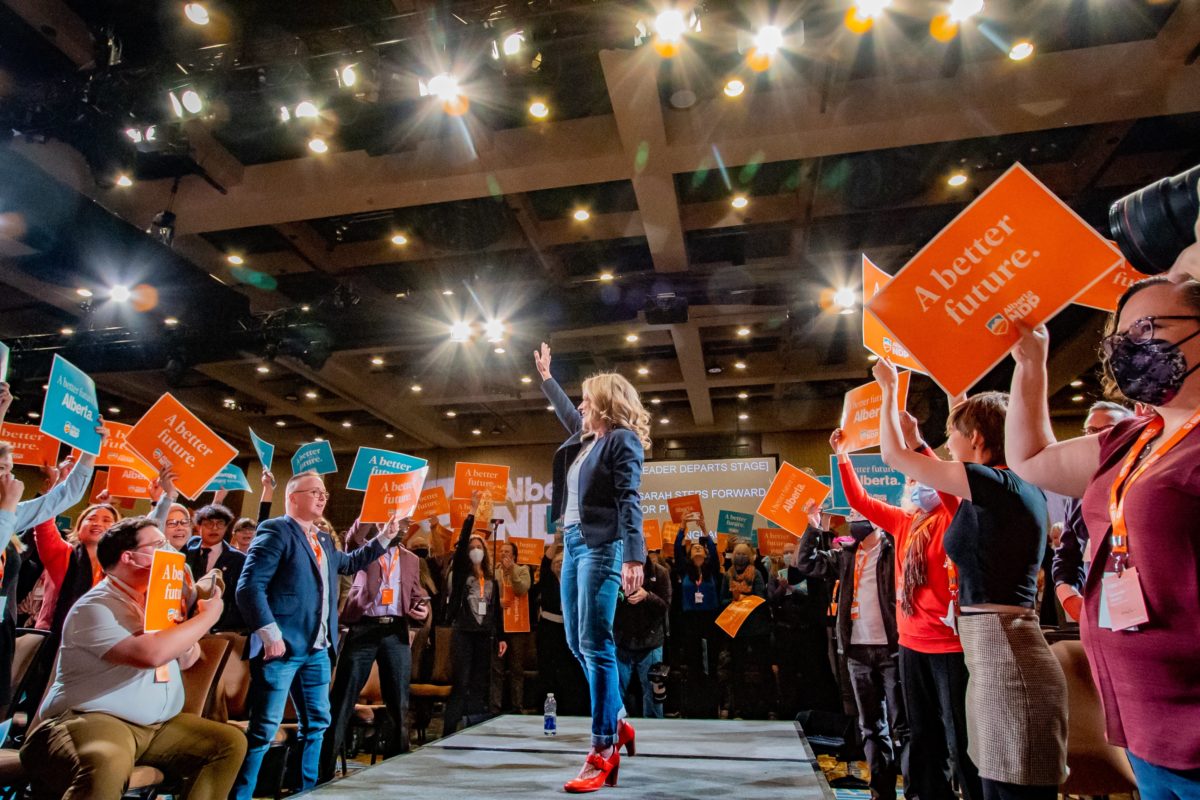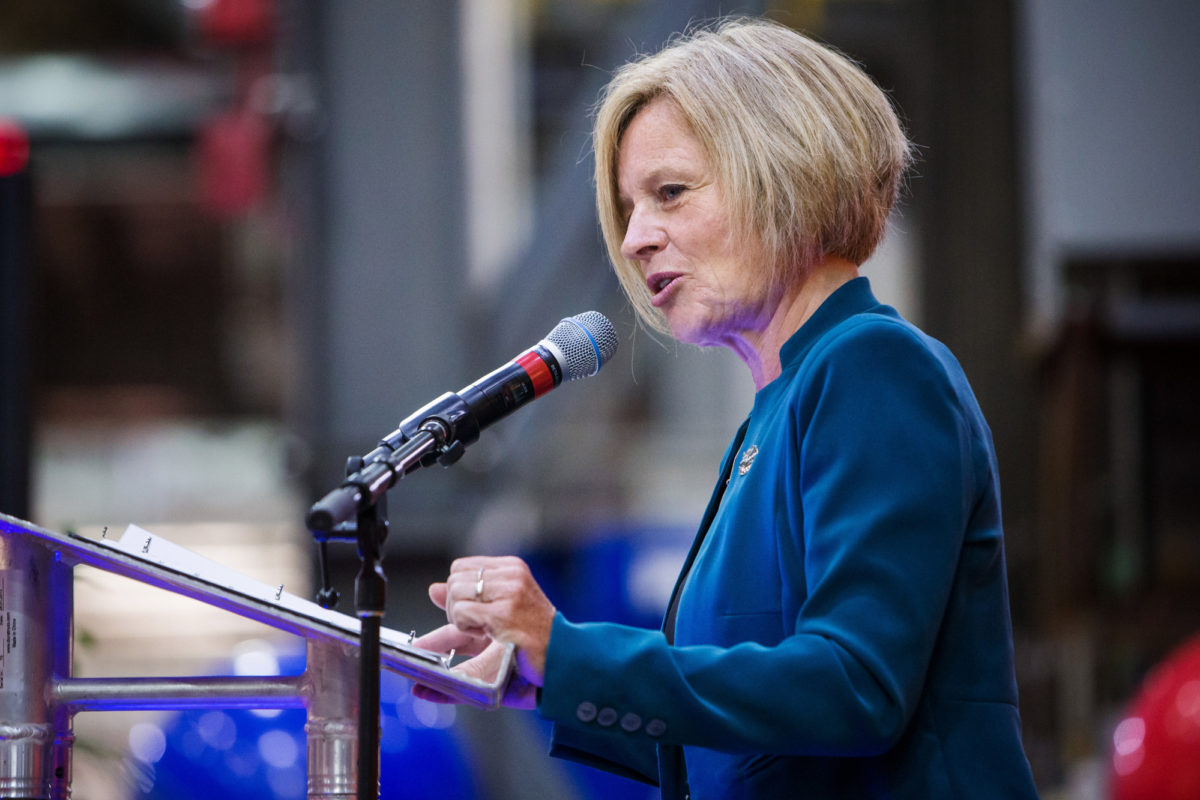Laurie-Lynn Discoteau went to the University of Alberta Hospital one evening in November 2022, seeking help for a painful and swollen infected foot.
The swelling meant her shoe and sock didn’t fit on the foot, resulting in frostbite.
After surgery, Discoteau says she was discharged with only a light bandage.
When she couldn’t recall the address of the place she’d been staying, she says the hospital staff put her in a cab to the Hope Mission shelter in central Edmonton, assuring her that the staff there had been notified and would bring her in immediately.
Upon arrival she recalls being told by shelter staff the facility was full and they’d had no call from the hospital.
“I had to wait for two hours outside in the cold. I think it was –40 with the wind chill that night,” she said in a recent interview with CBC News.
Hope Mission says after speaking to staff and reviewing CCTV footage, they can’t confirm Discoteau came to the shelter.
Regardless, Discoteau spent the night in a nearby encampment, in a damp tent with wet blankets. By morning the skin on her foot had blackened.
“I knew what that meant,” she says.
In late December, her leg was amputated below the knee. It was her second amputation: she’d lost the other foot in an accident five years ago.
It’s a common situation.
New data obtained by CBC News shows a major spike in the number of frostbite amputations performed in Edmonton last winter — more than the previous three years combined, and more than double any other year over the past decade.
Last winter was colder than average, but other even colder winters since 2011 saw little or no increase in amputations. What made last winter different was the sharp increase in the number of people who were homeless during the pandemic, experts say.
That influx into a flawed and under-resourced system produced a situation that became dangerous when freezing temperatures arrived.
“It’s a societal failure because we’re not making sure that our most vulnerable are taken care of,” says Scarlet Bjornson with the Bissell Centre, another of Edmonton’s homeless shelters.
Tracking the data
CBC News asked Alberta Health Services in November how many amputations due to frostbite there were in Edmonton each year.
A senior AHS communications advisor responded they didn’t have the information.
But a freedom of information request revealed that AHS does in fact track this data — and the numbers tell an alarming story.
The numbers are broken down by fiscal year, from April to March. This means each year of data includes one full winter season.
The fiscal year of 2021-2022 shows a dramatic spike in frostbite amputations in both Edmonton and Calgary, as registered by a code entered in AHS’s system.
There were 91 codes in Edmonton that year, the most of any year since at least 2011, sometimes by a factor of three or four. Calgary saw 65 codes, up from 19 the previous year.
Last winter was colder than average in Edmonton, with 6.7 more days than normal below –20 C, and nearly eight more days than normal below –30 C. The climate normals are calculated by Environment Canada based on Edmonton data from 1981 to 2010.
But there have been similar and even colder winters over the past decade, including 2013-2014 and 2018-2019, none of which saw even a modest increase in frostbite amputations.
Indeed, the winter of 2020-2021 had fewer days of extreme cold but the second-most number of frostbite amputations over the past decade.
People without housing face countless dangers
Sandy Dong, an emergency physician who has practised in Alberta for two decades, says the data confirms what he and his colleagues witnessed last winter.
While the figures do not indicate which demographics are receiving frostbite amputations, Dong says that, in his experience, nearly all are people who are homeless.
“The vast, vast majority of these individuals were unhoused. I can think of one person out of those, I’m going to say, scores, that had a permanent address,” says Dong.
“I think you can draw a straight line between our housing crisis and these outcomes.”
The loss of body parts due to prolonged exposure to cold weather is one of the more visceral risks endured by people without stable access to safe housing, but it’s far from the only one.
Violence, sexual assault and property theft are more common in homeless populations, and the risks are particularly high for youth and people identifying as LGBTQ2.
People experiencing homelessness are also disproportionately drawn from other vulnerable communities with their own elevated risk factors.
For example, while Indigenous people represent five per cent of the general population in Canada, nearly half of people who are homeless are Indigenous — and statistically more likely to experience police violence or intergenerational trauma from residential schools.
Several homeless people have died in recent years due to fires while trying to stay warm. Drug poisoning deaths from opioids have also skyrocketed.
In 2022, Edmonton saw an outbreak of shigella, a bacteria which causes dysentery and is typically found in areas where people lack access to basic sanitation.
Judith Gale, with the outreach group Bear Clan Patrol, agrees that the number of people she’s encountered with amputations has noticeably increased.
Gale says she’s often witnessed vulnerable people seeking warmth in the city’s LRT stations being forced to leave.
“Our brothers and sisters are constantly getting shuffled around by peace officers and police,” she said.
“In this cold weather, I would hope they would open their hearts a bit more and allow our brothers and sisters to stay within the confines of four walls and a roof, for goodness sake.”
Police and peace officers are required to ensure people are offered transportation to shelters when they’re kicked out of the LRT during cold weather, although there have been multiple instances where they’ve been accused of not doing so.
“These folks are the victims of a housing system that’s not working,” says Damian Collins, a professor and housing expert at the University of Alberta.
Official responses
City of Edmonton administration declined a request for an interview, instead offering to provide a statement in response to written questions.
“LRT stations are not appropriate shelter space as they lack basic amenities such as sufficient heat and washroom facilities,” the statement said.
Police and peace officers will evict people trying to stay warm in LRT stations, and while they “cannot force people to go to shelter… during extreme weather activations the city provides a number of options to anyone on ETS properties needing access to services, including direct transport to shelters with capacity.”
While noting that “some Edmontonians can’t or won’t access available shelter space,” the statement pointed to the city’s minimum standards for emergency shelters, which were adopted by council in 2021 to encourage shelter operators to address issues like safety, trauma, and lack of space for couples or pets.
However, the city provides no enforcement nor incentives for operators to implement the standards.
The statement did not answer the question of whether the city was aware of the sharp increase in frostbite amputations, only noting that “health statistics are provincial responsibilities.”
AHS did not answer a question about why CBC News had previously been told that frostbite amputations statistics were not tracked.
In a statement, AHS said the increase in frostbite amputations was “due to a number of factors, likely including higher numbers of unhoused homeless during a harsh winter.
“Increased numbers of overdoses attributable to the fentanyl crisis during the past three to four years have also contributed to higher numbers of individuals suffering frostbite.
“While not all homeless are unhoused during the cold winter months, many struggle with multiple issues including mental health, addictions, and general health problems. Barriers to accessing community and health supports, especially during the pandemic, were also compounding factors that may have contributed to higher incidents of frostbite-related amputations.”
AHS said the shigella outbreak in Edmonton was ongoing but that case numbers were trending downward. There have been 197 cases to date, of which 132 required hospitalization.
Housing-first is the most proven approach, say experts
Homelessness is a complex issue with myriad causes and intersections, touching on addiction, mental health, racism and intergenerational trauma. But experts and advocates say the solution is simple: unhoused people need housing.
“Housing-first works,” said Collins. “There’s really strong evidence of that.”
The concept of housing-first originated in New York City in the early 1990s.
Rather than require homeless people to deal with their addictions or mental health prior to receiving housing support, the housing-first approach provides people with safe, reliable, affordable housing, giving them the secure environment needed to more effectively and durably address the other challenges in their lives.
It’s an approach that’s been proven highly effective.
Finland is the only European Union country where homelessness is falling, and steadily so — results credited to its housing-first policy.
The approach has been implemented in Alberta, including Edmonton and Calgary.
Medicine Hat famously used housing-first to largely eradicate chronic homelessness, only to see the problem return during the pandemic.
Edmonton saw the number of people experiencing homelessness decrease steadily for years by as much as 40 per cent before the pandemic.
Advocates say the evidence is clear: not only does the approach work in the long term, it also lowers the many risks people without housing face, such as amputations due to frostbite.
“Housing really could fix that immediately,” says Bjornson from the Bissell Centre.
“If people had housing, they could have the harm to their person reduced.
The problem in Alberta, says Collins, is two-fold: insufficient government funding for housing given the rapid increase in need and the general unaffordability of market housing, which affects all Albertans but particularly those on low-income support.
“We did adopt housing-first and we did fund programs,” says Collins.
“But we didn’t do the other side of the coin, which is build the social and affordable units that are necessary to address the more systematic problems in the housing market.”
“The alternative, I guess,” he continued, “is a system that relies on shelters and policing, and that’s what we are seeing a lot of in Edmonton right now.”
That’s a view echoed by others.
“I’m really concerned how the narrative around homelessness is really at this point woven in a conversation around public safety, and it’s not around decency and human dignity and providing people with the things that they desperately need,” said Elliott Tanti, a senior manager with Boyle Street Community Services.
The provincial government announced in October a plan to spend $187 million to address homelessness, mental health and addictions. Some of that money will go toward shelters and policing. In December, the province surprised the municipal government with a task force charged with finding and implementing solutions to those issues.
Public Safety Minister Mike Ellis — the task force chair and a former cop — said at the announcement that the police are “not to be cast aside and pushed away… they’re the ones that need to help people.”
Tanti, Bjornson, Gale and Collins all raised the point that, while a housing-first approach would require public spending, the current approach — including the cost of policing, amputations and other preventable health issues — is already significant.
People pay the price
“I knew how to be very independent with that one leg,” says Discoteau, “but now having both of them gone, it’s another 360 in my life.”
Once a champion swimmer and University of Alberta student, she’s now receiving AISH and trying to find an affordable place to move into with her husband while grappling with phantom limb pain.
“It’s not something I’d wish on my worst enemy.”
An opioid addiction began in the hospital when she was given opioids for her first amputation.
Her second amputation, she says, occurred in part because a doctor dismissed her as merely a drug user seeking a warm bed.
AHS wouldn’t comment on an individual case but said it “consults with multiple groups including social work and specialty services to prepare discharge plans that are suitable for the individual.”
Discoteau says that kind of discrimination is not unique to her as an Indigenous woman, nor to the health-care system
It’s pervasive in a society more concerned with pushing homeless people out of the way rather than addressing their needs, she says.
“I know people who would rather die than go to a hospital, because of the treatment they’d received at a hospital,” she says.
Compassion is what’s most needed, says Collins, from street level interactions up to the policymakers.
“We need to view the problem through that lens: that this is the symbol of a failing housing system, people sleeping in LRT stations, for example, and we need to have some sympathy rather than outrage, perhaps.”
Source: https://www.cbc.ca/
